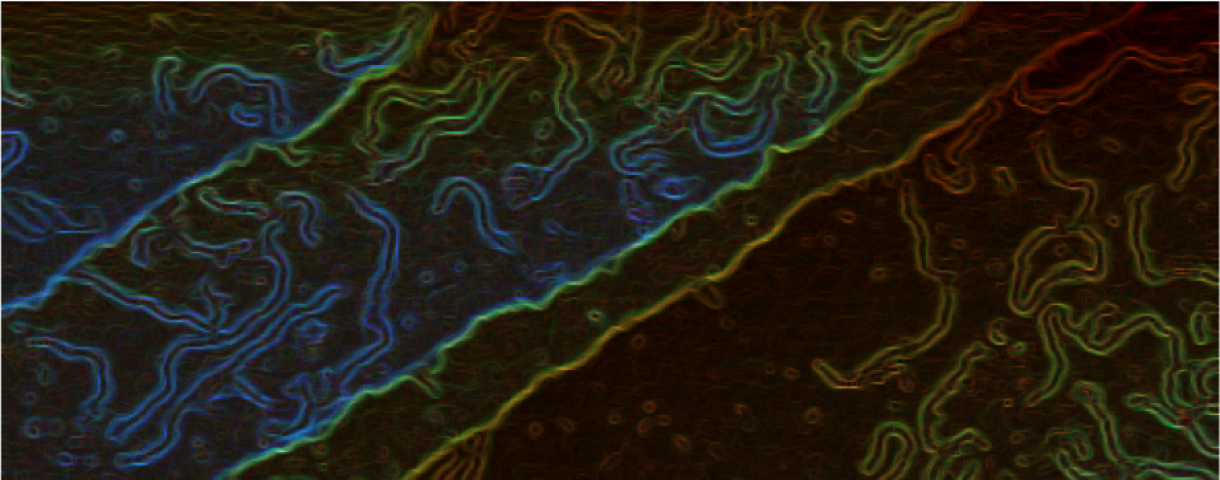Dysprosium-directed metallosupramolecular network on graphene/Ir(111) (CHEM. COMMUN. 2021)
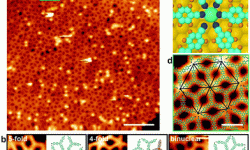
The interest in exploiting the unique properties of lanthanides has led to the recent design of two-dimensional coordination networks incorporating f-block elements on metallic surfaces. In order to take this field to the next step of progression, it is necessary to electronically decouple these two-dimensional architectures from the metallic surface…
From high quality packing to disordered nucleation or phase separation in donor/acceptor interfaces: ClAlPc-C60 on Au(111) (PHYS. CHEM. CHEM. PHYS. 2021)
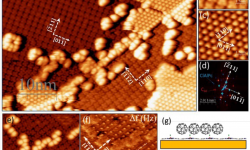
The dramatic consequences that the orientation adopted by the molecular dipoles, in diverse arrays of chloroaluminum phthalocyanine (ClAlPc) on Au(111), have on the ulterior adsorption and growth of C60 are explored by means of an all scanning probe microscopy approach. The unidirectional downwards organization of the molecular dipoles at the first…
Lanthanide-porphyrin species as Kondo irreversible switches through tip-induced coordination chemistry (NANOSCALE 2021)
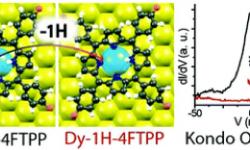
Metallosupramolecular chemical protocols are applied to in situ design dysprosium porphyrin complexes on Au(111) by sequential deposition of 2H-4FTPP species and Dy, resulting in the production of premetallated Dy-2H-4FTPP, partially metallated Dy-1H-4FTPP and fully metallated Dy-0H-4FTPP complexes, as determined by scanning tunneling microscopy (STM) and density functional theory (DFT) calculations. A zero…
A Trapezoidal Octacyanoquinoid Acceptor Forms Solution and Surface Products by Antiparallel Shape Fitting with Conformational Dipole Momentum Switch (ANGEW. CHEM. 2021)
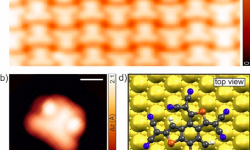
A new compound (1) formed by two antiparallelly disposed tetracyano thienoquinoidal units has been synthesized and studied by electrochemistry, UV/Vis-NIR, IR, EPR, and transient spectroscopy. Self-assembly of 1 on a Au(111) surface has been investigated by scanning tunneling microscopy. Experiments have been rationalized by quantum chemical calculations. 1 exhibits a…
INTERACTION OF ATOMIC SILICON AND MOLECULAR HYDROGEN IN THE ENVELOPE OF EVOLVED STARS (ASTROPHYS. J. 2021)

In the atmosphere of carbon-rich (C-rich) asymptotic giant branch stars (AGBs), silicon chemistry plays an important role as is revealed by the detection of silane (SiH4) and organosilicon compounds such as methyl silane (CH3SiH3) and sylil cyanide (SiH3CN). To deepen the understanding on the formation of silicon bearing molecules in…
INFRA-ICE: SIMULATING THE COSMIC DUST-ICE INTERACTION IN THE INTERSTELLAR MEDIUM (REV. SCI. INSTRUM. 2020)

The last module of Stardust, INFRA-ICE, is ready! This module is dedicated to simulate the chemistry taking place in the densest regions of the interstellar medium, the so-called dense molecular clouds. As such, INFRA-ICE expands the capabilities of Stardust allowing for the complete journey of cosmic dust to be…
Surfaces open new routes: unexpected formation of m-PANI oligomers from p-aminophenol (ANGEW. CHEM. 2020)
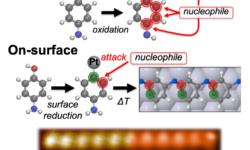
Surfaces never fail to surprise. Once more, they have demonstrated that chemistry on 2D metallic surfaces behaves differently to that on solution (3D). We have shown that highly unspecific solution-based Michael addition transforms into highly selective when carried out on a Pt(111) surface. In this way, we are able to…
Surface symmetry and reactivity rule the room-temperature adsorption of p-aminophenol (J. Phys. Chem. C 2020)
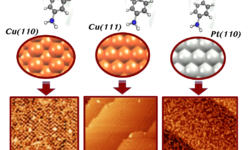
Molecular chemisorption on metal surfaces has attracted great interest over the past decades. Both the characteristics of the adsorbed molecules and the surface properties govern the chemisorption processes. We have studied the role of the nature and symmetry of different metallic surfaces, Cu(110), Cu(111) and Pt(111), on the room-temperature adsorption…
Decoupling of PVD graphene by controlled oxygen intercalation (App. Surf. Sci. 2020)

In the last decade after graphene isolation in 2004, many methods have been developed for the synthesis of this material. The most used substrates have been metal surfaces, due to their catalytic action, which is helpful for the formation of graphene. However, the coupling of the graphene layer with the…
The interaction of atomic carbon and acetylene investigated with STARDUST (Astrophys. J. 2020)
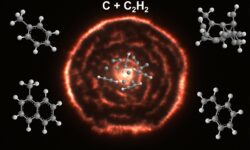
Background image: Spiral structure around the red giant star R Sculptoris. Credit: ALMA (ESO/NAOJ/NRAO)/M. Maercker et al. The formation of interstellar carbon dust in dying stars is still not fully understood. In particular, the interaction of atomic carbon with the most abundant chemical species in the atmosphere of red…






